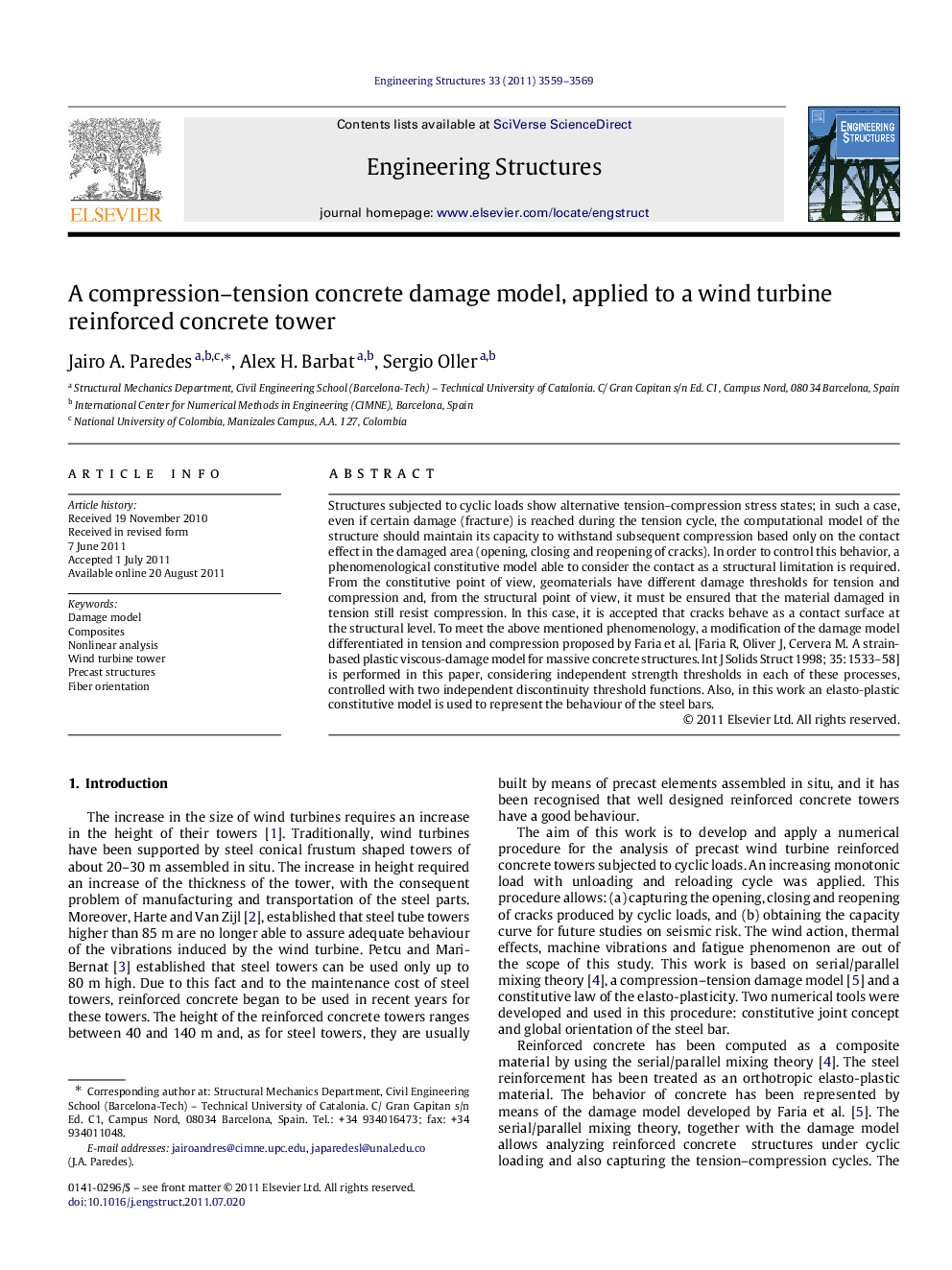| Article ID | Journal | Published Year | Pages | File Type |
|---|---|---|---|---|
| 268059 | Engineering Structures | 2011 | 11 Pages |
Structures subjected to cyclic loads show alternative tension–compression stress states; in such a case, even if certain damage (fracture) is reached during the tension cycle, the computational model of the structure should maintain its capacity to withstand subsequent compression based only on the contact effect in the damaged area (opening, closing and reopening of cracks). In order to control this behavior, a phenomenological constitutive model able to consider the contact as a structural limitation is required. From the constitutive point of view, geomaterials have different damage thresholds for tension and compression and, from the structural point of view, it must be ensured that the material damaged in tension still resist compression. In this case, it is accepted that cracks behave as a contact surface at the structural level. To meet the above mentioned phenomenology, a modification of the damage model differentiated in tension and compression proposed by Faria et al. [Faria R, Oliver J, Cervera M. A strain-based plastic viscous-damage model for massive concrete structures. Int J Solids Struct 1998; 35:1533–58] is performed in this paper, considering independent strength thresholds in each of these processes, controlled with two independent discontinuity threshold functions. Also, in this work an elasto-plastic constitutive model is used to represent the behaviour of the steel bars.
► Reinforced concrete wind turbine towers studied as composite structures. ► Captured the cyclic opening, closing and reopening of cracks in the structure. ► Damage evolution is obtained in function of load cycle. ► Joints between precast structural parts described using a constitutive damage model.
